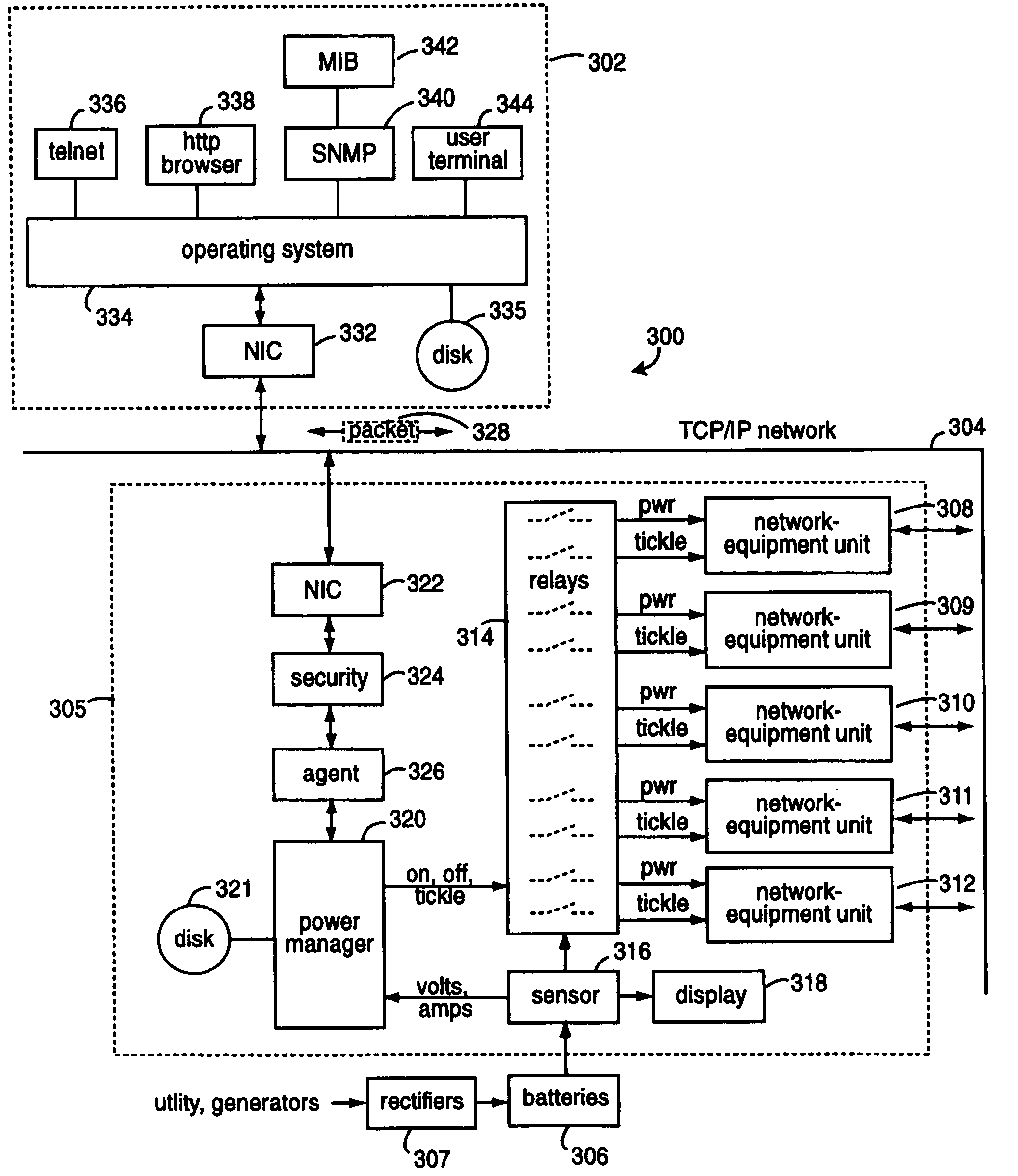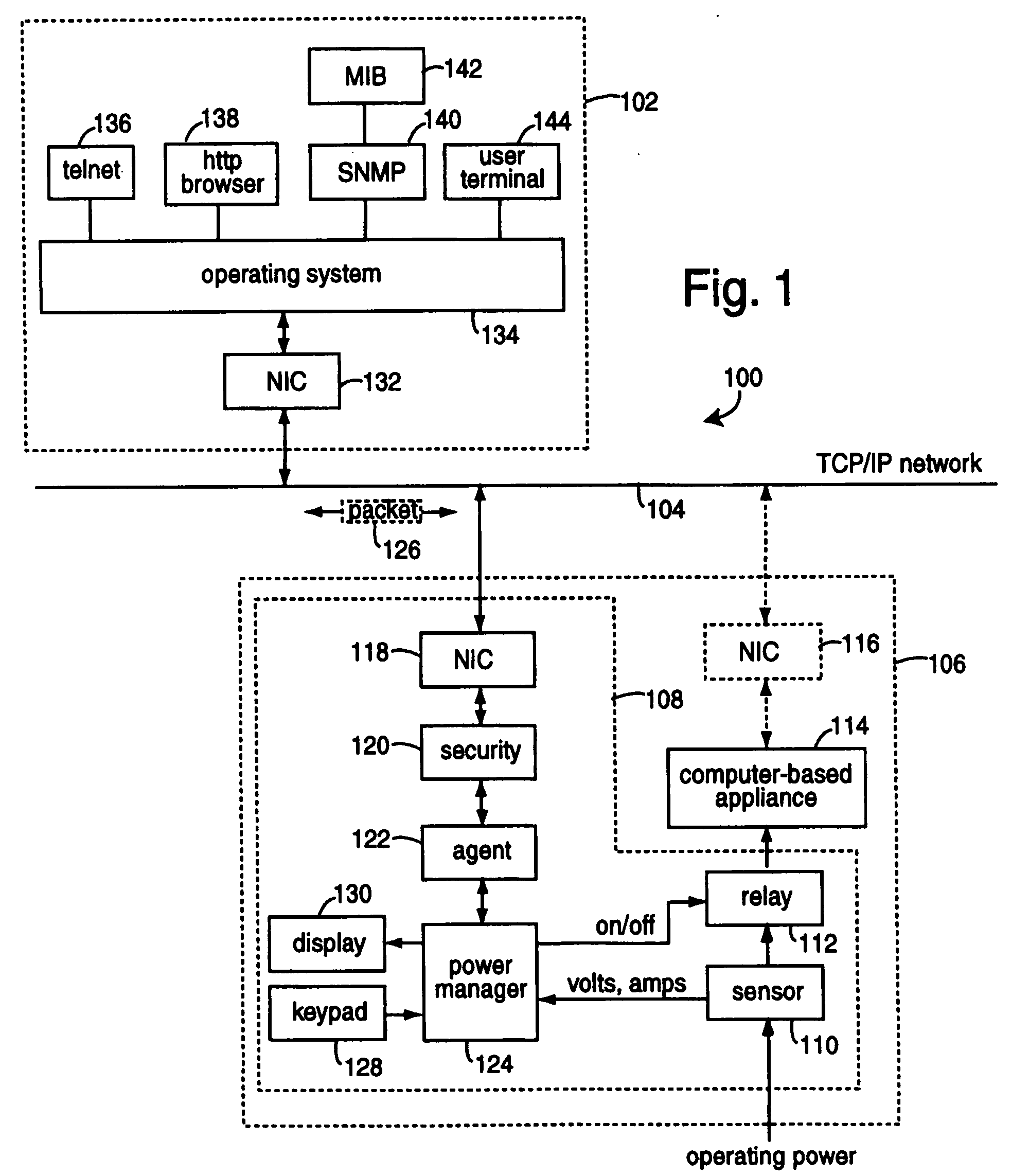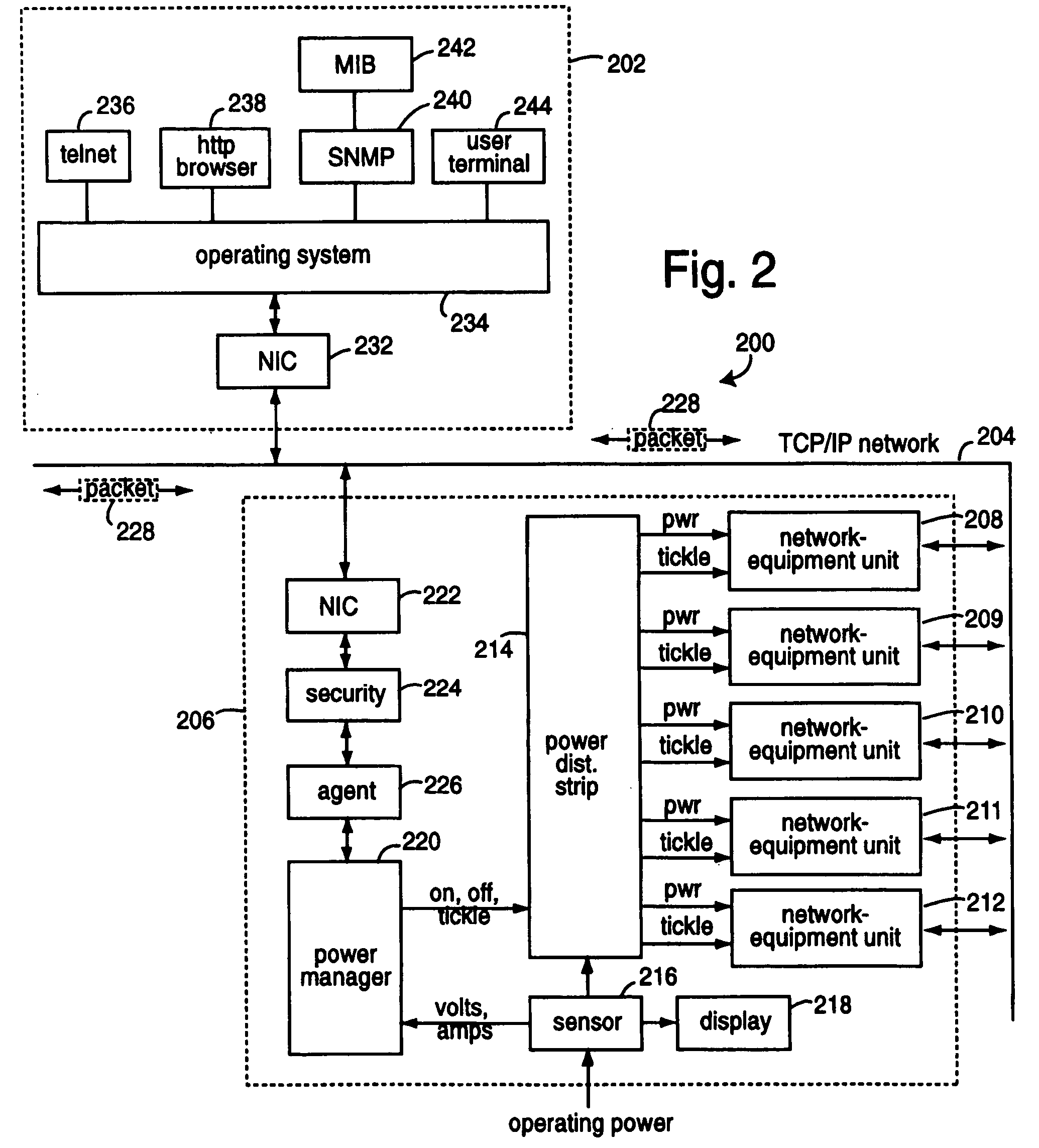Network-connected power manager for rebooting remote computer-based appliances
a network connection and computer-based appliance technology, applied in the direction of substation/switching arrangement casings, liquid/fluent solid measurement, coupling device connections, etc., can solve the problems of inability to send a technician to the site to force the operating power on-off, the cost of downtime. , to achieve the effect of reducing the time it takes to restore a failed network appliance, reducing organization losses from network down
- Summary
- Abstract
- Description
- Claims
- Application Information
AI Technical Summary
Benefits of technology
Problems solved by technology
Method used
Image
Examples
Embodiment Construction
[0036]FIG. 1 represents a power manager system embodiment of the present invention, and is referred to herein by the general reference numeral 100. A network management system (NMS) 102 is connected by a network 104 to a remote site 106. A power controller 108 forwards operating power through a sensor 110 and relay-switch 112 to a computer-based appliance 114. Such operating power can be the traditional 110VAC or 220VAC power familiar to consumers, or direct current (DC) battery power familiar to telephone central-office “plant” employees. A network interface controller (NIC) 116 may be used to connect the computer-based appliance 114 to the network 104. This would be especially true in the computer-based appliance 114 were a server, router, bridge, etc.
[0037] The problem to be solved by the power manager system 100 is the maintenance of the operating health of the computer-based appliance 114. Such computer-based appliance 114 is prone to freezing or crashing where it is effective...
PUM
 Login to View More
Login to View More Abstract
Description
Claims
Application Information
 Login to View More
Login to View More - R&D
- Intellectual Property
- Life Sciences
- Materials
- Tech Scout
- Unparalleled Data Quality
- Higher Quality Content
- 60% Fewer Hallucinations
Browse by: Latest US Patents, China's latest patents, Technical Efficacy Thesaurus, Application Domain, Technology Topic, Popular Technical Reports.
© 2025 PatSnap. All rights reserved.Legal|Privacy policy|Modern Slavery Act Transparency Statement|Sitemap|About US| Contact US: help@patsnap.com



